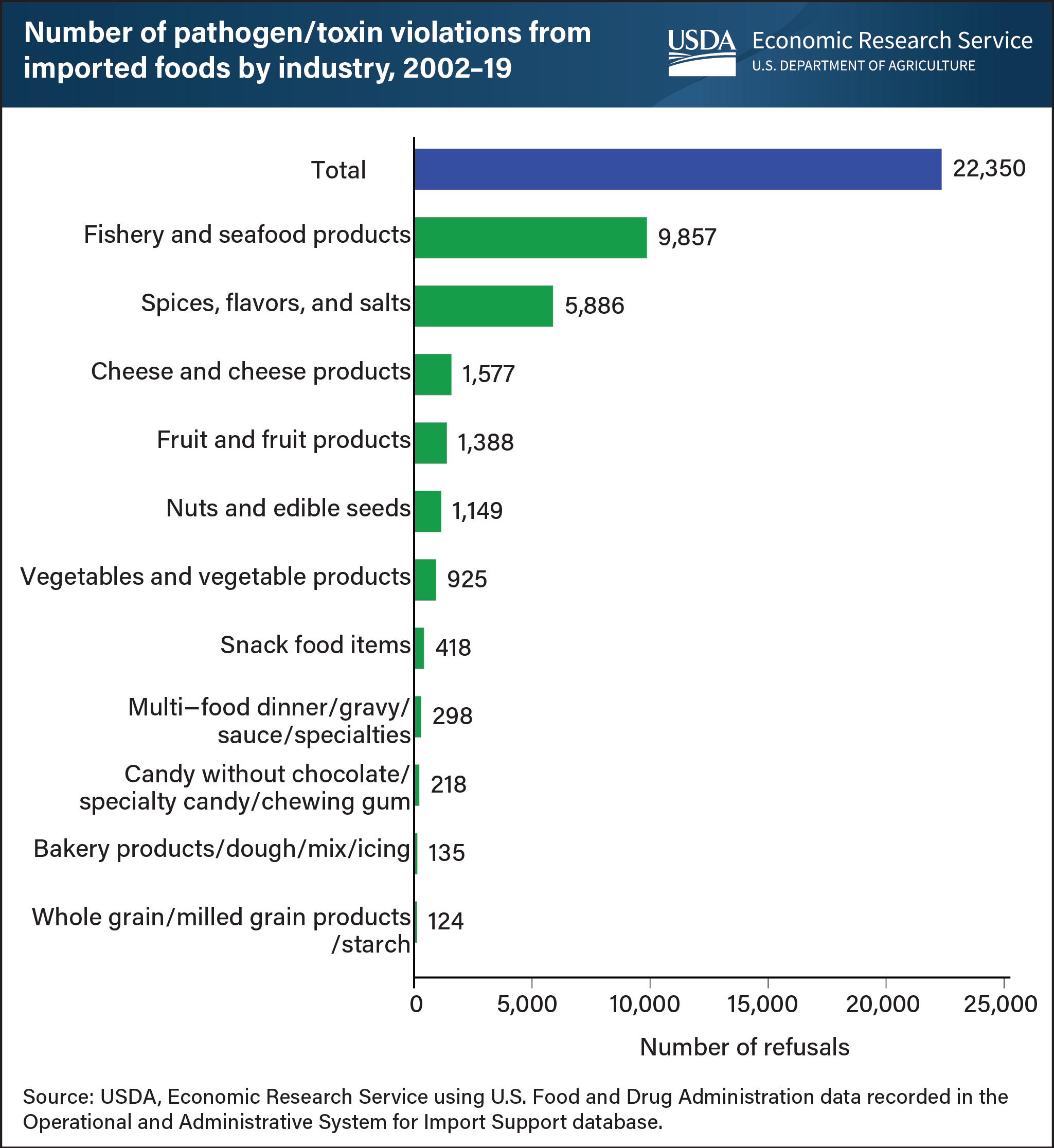Imported fishery and seafood products had most pathogen/toxin violations over past two decades
- by Jae-Wan Ahn
- 2/7/2022

Food imported into the United States from other countries may contain pathogens such as bacteria, viruses, or other disease-causing microorganisms, or toxins, which are mostly produced by microorganisms. These pathogens and toxins could lead to foodborne illnesses. From 2002 to 2019, a total of 22,350 pathogen violations occurred from imported foods. About 70 percent of those violations came from two food sources: the fishery and seafood products industry and the spices, flavors, and salts industry. Fishery and seafood products had 9,857 pathogen violations over this period, accounting for 44.1 percent of the total refused imports. This category was followed by spices, flavors, and salts, which had 5,886 violations, or 26.3 percent of the total. Cheese and cheese products accounted for 7.1 percent of the total, followed by fruits and fruit products with 6.2 percent, nuts and edible seeds with 5.1 percent, and vegetables and vegetable products with 4.1 percent. In total, the top six food industries accounted for 93 percent of the total pathogen violations over the period. This chart was drawn from the USDA, Economic Research Service report Examining Pathogen-Based Import Refusals: Trends and Analysis From 2002 to 2019, published December 2021.


